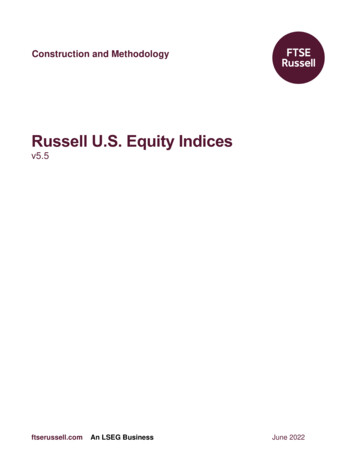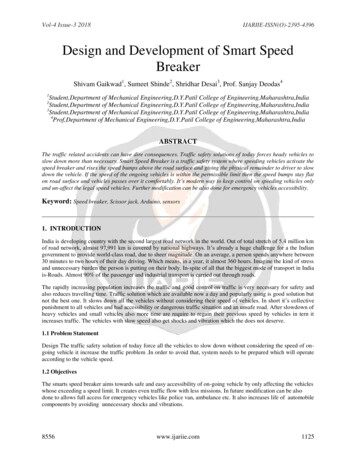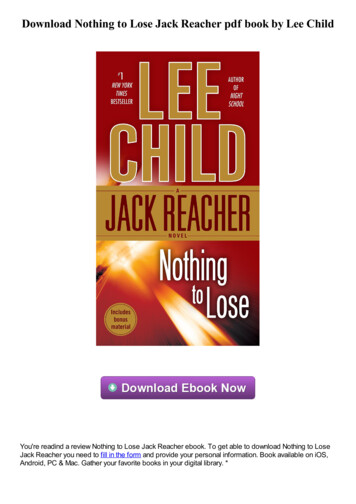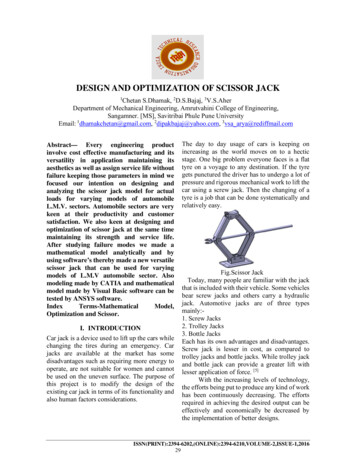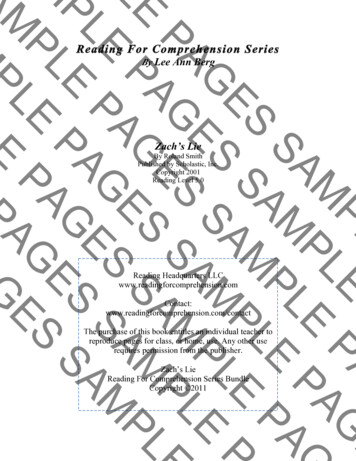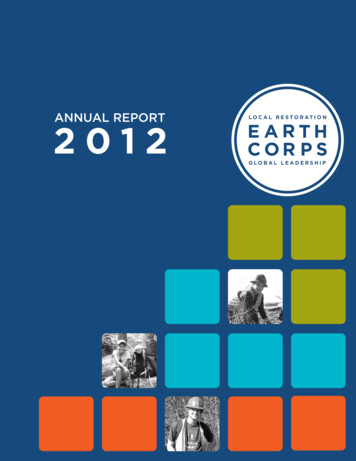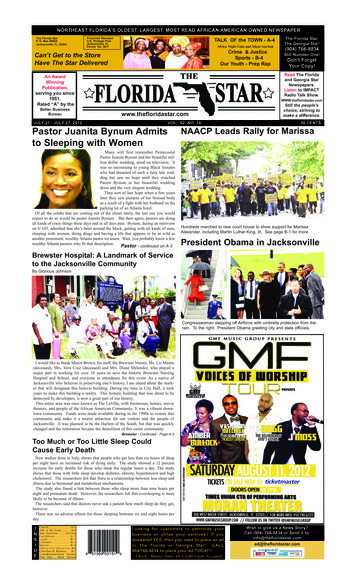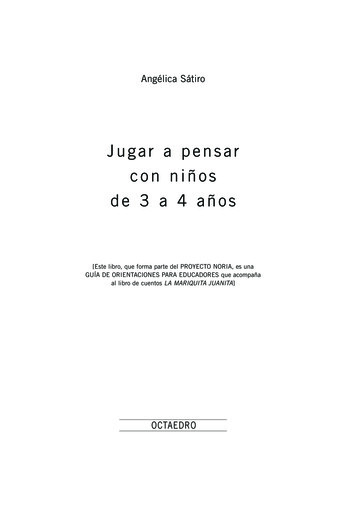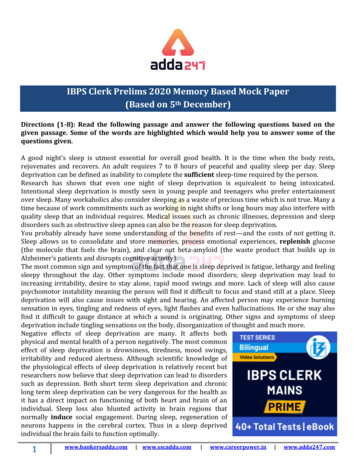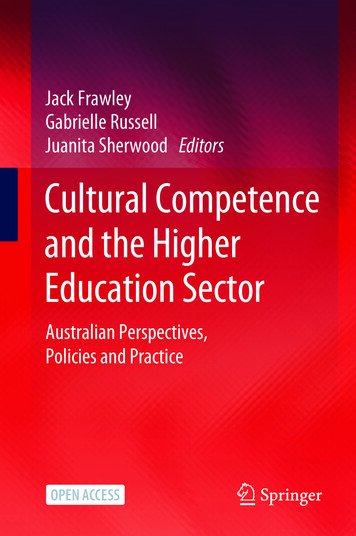
Transcription
Jack FrawleyGabrielle RussellJuanita Sherwood EditorsCultural Competenceand the HigherEducation SectorAustralian Perspectives,Policies and Practice
Cultural Competence and the Higher EducationSector
Jack Frawley Gabrielle RussellJuanita Sherwood EditorsCultural Competenceand the Higher EducationSectorAustralian Perspectives, Policies and Practice123
EditorsJack FrawleyNational Centre for Cultural CompetenceThe University of SydneySydney, NSW, AustraliaGabrielle RussellNational Centre for Cultural CompetenceThe University of SydneySydney, NSW, AustraliaJuanita SherwoodFaculty of Medicine and HealthThe University of SydneySydney, NSW, AustraliaISBN 978-981-15-5361-5ISBN 5-5362-2(eBook) The Editor(s) (if applicable) and The Author(s) 2020. This book is an open access publication.Open Access This book is licensed under the terms of the Creative Commons Attribution 4.0International License (http://creativecommons.org/licenses/by/4.0/), which permits use, sharing, adaptation, distribution and reproduction in any medium or format, as long as you give appropriate credit tothe original author(s) and the source, provide a link to the Creative Commons license and indicate ifchanges were made.The images or other third party material in this book are included in the book’s Creative Commonslicense, unless indicated otherwise in a credit line to the material. If material is not included in the book’sCreative Commons license and your intended use is not permitted by statutory regulation or exceeds thepermitted use, you will need to obtain permission directly from the copyright holder.The use of general descriptive names, registered names, trademarks, service marks, etc. in this publication does not imply, even in the absence of a specific statement, that such names are exempt from therelevant protective laws and regulations and therefore free for general use.The publisher, the authors and the editors are safe to assume that the advice and information in thisbook are believed to be true and accurate at the date of publication. Neither the publisher nor theauthors or the editors give a warranty, expressed or implied, with respect to the material containedherein or for any errors or omissions that may have been made. The publisher remains neutral with regardto jurisdictional claims in published maps and institutional affiliations.This Springer imprint is published by the registered company Springer Nature Singapore Pte Ltd.The registered company address is: 152 Beach Road, #21-01/04 Gateway East, Singapore 189721,Singapore
PrefaceWhile there exist publications on cultural competence across a variety of disciplines, there are very few that have a sharp focus on cultural competence and itsintersections with the higher education sector. Developing cultural competence inhigher education requires comprehensive institutional strategies that place universities as agents of change and transformation. This book brings togetherresearchers, scholars, policy-makers, practitioners, and professionals who have aninterest and/or experience in cultural competence policies and practice. The overarching theme throughout is cultural competence and its intersection with the highereducation sector, from multidisciplinary and interdisciplinary perspectives alignedwith policies and programs.Sydney, AustraliaJack FrawleyGabrielle RussellJuanita SherwoodAcknowledgements The editors acknowledge and pay respect to the Traditional Custodians of thelands where Australian universities now stand and the contribution they make to higher education.The editors wish to thank the many contributors to this book, including the authors andpeer-reviewers and, especially, the staff of the National Centre for Cultural Competence and OnTime Typing.v
ContentsPart I1IntroductionCultural Competence and the Higher Education Sector:A Journey in the Academy . . . . . . . . . . . . . . . . . . . . . . . . . . . . . . .Jack Frawley, Gabrielle Russell, and Juanita SherwoodPart II3Perspectives2The “Culture” in Cultural Competence . . . . . . . . . . . . . . . . . . . . .Michael Davis153Reflecting on a Way of Being: Anchor Principlesof Cultural Competence . . . . . . . . . . . . . . . . . . . . . . . . . . . . . . . . .Gabrielle Russell314Locating Human Rights in the Cultural Competence Context . . . .Michael Johnston5On the Critical, Morally Driven, Self-reflective Agents of Changeand Transformation: A Literature Review on CulturallyCompetent Leadership in Higher Education . . . . . . . . . . . . . . . . . .Alessandra Pecci, Jack Frawley, and Tran Nguyen6Beliefs, Events and Values Inventory Assessment of GlobalIdentity: Implications and Applications for International,Cross-Cultural and Transformative Learning . . . . . . . . . . . . . . . . .Felix Wang, Kathleen Pait, Kris Acheson, Lee Sternberger,Renee Staton, and Craig N. ShealyPart III7435983Policy and Policy IssuesEvaluating Cultural Competence in Indigenous Higher EducationContexts in Australia: A Challenge for Change . . . . . . . . . . . . . . . 117James A. Smith and Kim Robertsonvii
viiiContents8Indigenist Leadership in Academia: Towards an AspirationalModel of Mindful Servant Leadership . . . . . . . . . . . . . . . . . . . . . . 137Kerrie E. Doyle, Catherine Hungerford, Chris Pitt, Paul Saunders,and Kyar Wilkey9Racism a Social Determinant of Indigenous Health: YarningAbout Cultural Safety and Cultural Competence Strategies toImprove Indigenous Health . . . . . . . . . . . . . . . . . . . . . . . . . . . . . . . 159Juanita Sherwood and Janine Mohamed10 Healing Mainstream Health: Building Understandingand Respect for Indigenous Knowledges . . . . . . . . . . . . . . . . . . . . . 175Liz Rix and Darlene Rotumah11 History in the Now: Asserting Indigenous Difference in “TopEnd” Higher Education Using Culturally Responsive Pedagogy . . . 197Michele Willsher and Janine OldfieldPart IVPractice and Programs12 The Sydney Language on Our Campuses and inOur Curriculum . . . . . . . . . . . . . . . . . . . . . . . . . . . . . . . . . . . . . . . 215Rosanne Quinnell, Jakelyn Troy, and Matthew Poll13 Students and Academics Working in Partnership to EmbedCultural Competence as a Graduate Quality . . . . . . . . . . . . . . . . . 233Amani Bell, Stephanie Barahona, Gulnaz Beg, Susan Coulson,Roman Eymont, Jodie Hartman, Tom Hubble, Natalie Leung,Michael A. McDonnell, Jiaru Ni, Tai Peseta, Ehssan Sakhaee,and Jonnell Uptin14 Embedding Cultural Competence in Science Curricula . . . . . . . . . 255Rebecca Cross, Elisa Bone, Peter Ampt, Tina Bell, Rosanne Quinnell,and Jaime Gongora15 Embedding Cultural Competence in Faculty: A Mixed-MethodsEvaluation of an Applied Indigenous Proficiency Workshop . . . . . 277Kerrie E. Doyle, Lauren Zarb, Kyar Wilkey, Kayla Sale, Chris Pitt,and Dein Vindigni16 An Indigenous Australian Cultural Competence Course:Talking Culture, Race and Power . . . . . . . . . . . . . . . . . . . . . . . . . . 295Bronwyn Fredericks and Debbie Bargallie17 Learning Through Reflection—Enhancing Culturally ProficientLearning Communities in Midwifery Practiceand Education: An Experience-Based Learning Journeyin London, UK . . . . . . . . . . . . . . . . . . . . . . . . . . . . . . . . . . . . . . . . 309Penny Haora
Contentsix18 International Students in Australia, Employability and CulturalCompetence . . . . . . . . . . . . . . . . . . . . . . . . . . . . . . . . . . . . . . . . . . . 331Tran Nguyen and Donna HartzPart VConclusion19 Future Directions: Cultural Competence and the HigherEducation Sector . . . . . . . . . . . . . . . . . . . . . . . . . . . . . . . . . . . . . . . 351Jack Frawley, Gabrielle Russell, and Juanita SherwoodIndex . . . . . . . . . . . . . . . . . . . . . . . . . . . . . . . . . . . . . . . . . . . . . . . . . . . . . . 357
Editors and ContributorsAbout the EditorsJack Frawley has a national and international profile as researcher, writer, andeducator in the areas of intercultural studies, education, history, leadership studies,and the arts. He has worked extensively as a consultant for program evaluation,research, and education-related projects, in Australian Aboriginal communities aswell as in the South Pacific and Southeast Asia, especially in Cambodia.Gabrielle Russell is the Acting Director of the National Centre for CulturalCompetence, The University of Sydney. Her diverse experience has been gainedworking in non-government organisations, politics, business, church organisations,and higher education. She is particularly interested in how to develop culturalcompetence from a non-Indigenous perspective and, in particular, how to facilitate adeeper understanding of transformative ways to learn and work together.Gabrielle’s teaching and research interests include race and racism, critical pedagogies, service learning, and cultural competence.Juanita Sherwood is a Wiradjuri woman from New South Wales. She has over 25years of experience in Indigenous health and education, community-based researchmethodologies, and decolonisation strategies that improve health and healing outcomes for Indigenous people. She is currently the Associate Dean (Indigenous) forthe Faculty of Medicine and Health at The University of Sydney.ContributorsKris Acheson Purdue University, West Lafayette, IN, USAPeter Ampt School of Life and Environmental Sciences, The University ofSydney, Sydney, NSW, Australiaxi
xiiEditors and ContributorsStephanie Barahona Faculty of Arts and Social Sciences, The University ofSydney, Camperdown, NSW, AustraliaDebbie Bargallie Griffith University, Mount Gravatt, QLD, AustraliaGulnaz Beg Faculty of Science, The University of Sydney, Camperdown, NSW,AustraliaAmani Bell Sydney School of Education and Social Work, The University ofSydney, Camperdown, NSW, AustraliaTina Bell School of Life and Environmental Sciences, The University of Sydney,Sydney, NSW, AustraliaElisa Bone Faculty of Science, The University of Sydney, Sydney, NSW,AustraliaSusan Coulson Faculty of Health Sciences, The University of Sydney,Camperdown, NSW, AustraliaRebecca Cross School of Life and Environmental Sciences, The University ofSydney, Sydney, NSW, AustraliaMichael Davis National Centre for Indigenous Studies, Australian NationalUniversity, Canberra, ACT, AustraliaKerrie E. Doyle School of Medicine, Western Sydney University, Sydney, NSW,AustraliaRoman Eymont Faculty of Engineering, The University of Sydney, Camperdown,NSW, AustraliaJack Frawley National Centre for Cultural Competence, The University ofSydney, Sydney, NSW, AustraliaBronwyn Fredericks The University of Queensland, Brisbane, AustraliaJaime Gongora School of Veterinary Science, The University of Sydney, Sydney,NSW, AustraliaPenny Haora National Centre for Immunisation Research and Surveillance,Westmead, NSW, AustraliaJodie Hartman Sydney School of Education and Social Work, The University ofSydney, Camperdown, NSW, AustraliaDonna Hartz Faculty of Health, Charles Darwin University, Darwin, NT,AustraliaTom Hubble Engineering and Environmental Geology, The University of Sydney,Camperdown, NSW, Australia
Editors and ContributorsxiiiCatherine Hungerford School of Nursing, Midwifery and Indigenous Health,Charles Sturt University, Bathurst, AustraliaMichael Johnston The University of Sydney, Sydney, AustraliaNatalie Leung International and Global Studies, Camperdown, NSW, AustraliaMichael A. McDonnell Early American History, The University of Sydney,Camperdown, NSW, AustraliaJanine Mohamed The Lowitja Institute, Carlton, VIC, AustraliaTran Nguyen National Centre for Cultural Competence, The University ofSydney, Sydney, NSW, AustraliaJiaru Ni Faculty of Health Sciences, The University of Sydney, Camperdown,NSW, AustraliaJanine Oldfield Batchelor Institute, Batchelor, NT, AustraliaKathleen Pait James Madison University, Harrisonburg, VA, USAAlessandra Pecci Faculty of Society and Design, Bond University, Gold Coast,QLD, AustraliaTai Peseta Western Sydney University, Sydney, NSW, AustraliaChris Pitt Aboriginal Health and Wellbeing Clinical Academic Group, Universityof NSW, Kensington, AustraliaMatthew Poll University Museums, The University of Sydney, Sydney, NSW,AustraliaRosanne Quinnell Faculty of Science, The University of Sydney, Sydney, NSW,AustraliaLiz Rix Gnibi College of Indigenous Australians, Southern Cross University,Lismore, AustraliaKim Robertson Office of the Pro Vice Chancellor—Indigenous Leadership,Charles Darwin University, Darwin, NT, AustraliaDarlene Rotumah Gnibi College of Indigenous Australians, Southern CrossUniversity, Lismore, AustraliaGabrielle Russell National Centre for Cultural Competence, The University ofSydney, Sydney, NSW, AustraliaEhssan Sakhaee School of Civil Engineering, The University of Sydney,Camperdown, NSW, AustraliaKayla Sale Translational Health Research Institute, Western Sydney University,Sydney, NSW, Australia
xivEditors and ContributorsPaul Saunders Translational Health Research Institute, Western SydneyUniversity, Sydney, NSW, AustraliaCraig N. Shealy James Madison University, Harrisonburg, VA, USAJuanita Sherwood Faculty of Medicine and Health, The University of Sydney,Sydney, NSW, AustraliaJames A. Smith National Centre for Student Equity in Higher Education, Bentley,AustraliaRenee Staton James Madison University, Harrisonburg, VA, USALee Sternberger James Madison University, Harrisonburg, VA, USAJakelyn Troy Aboriginal and Torres Strait Islander Research, The University ofSydney, Sydney, NSW, AustraliaJonnell Uptin Sydney School of Education and Social Work, The University ofSydney, Camperdown, NSW, AustraliaDein Vindigni School of Health and Biomedical Science, Royal MelbourneInstitute of Technology, Melbourne, VIC, AustraliaFelix Wang James Madison University, Harrisonburg, VA, USAKyar Wilkey Translational Health Research Institute, Western Sydney University,Sydney, NSW, AustraliaMichele Willsher Batchelor Institute, Batchelor, NT, AustraliaLauren Zarb School of Nursing and Midwifery, La Trobe University, Melbourne,VIC, Australia
List of FiguresFig. 6.1Fig. 6.2Fig.Fig.Fig.Fig.6.36.46.57.1Fig. 7.2Fig. 8.1Fig. 8.2Fig. 8.3Fig. 10.1Fig. 12.1Fig. 12.2Fig. 12.3Fig. 13.1Fig. 14.1Aggregate Profile—contrast by top 30% and bottom30% of Full Scale scores . . . . . . . . . . . . . . . . . . . . . . . . . . . .Decile Profile—contrast by top 30% and bottom 30%of full Scale scores . . . . . . . . . . . . . . . . . . . . . . . . . . . . . . . . .Aggregate Profile—contrast by gender . . . . . . . . . . . . . . . . . .Aggregate Profile—contrast by country of origin . . . . . . . . . .Aggregate Profile—contrast by ethnicity . . . . . . . . . . . . . . . . .Conceptual model of potential performance parameters tostrengthen Indigenous higher education monitoring andevaluation in Australia. Source Smith et al. (2018, p. 71)reproduced with permission . . . . . . . . . . . . . . . . . . . . . . . . . .Towards data sovereignty: a national conversation aboutstrengthening evaluation in Indigenous higher contexts inAustralia. Source NCSEHE (2018, p. 5) reproduced withpermission. Design by Jeffrey Phillips . . . . . . . . . . . . . . . . . .The motivational gravity grid (Carr & MacLachlan, 1997).Used with permission of the authors, 2019 . . . . . . . . . . . . . . .Perceived workplace cultures of respondents (n 10) . . . . . .An indigenist model of leadership . . . . . . . . . . . . . . . . . . . . .The Aboriginal “culture house”—a metaphor for thecomplexity and interdependence of related aspects ofaddressing cultural differences (Franks, 2011 p. 9) . . . . . . . . .Extract from Dawes notebook (Dawes et al., 2009) . . . . . . . .Patyegarang trail in Campus Flora . . . . . . . . . . . . . . . . . . . . .Robert Andrew’s work, GARABARA, installed at thenew Faculty of Arts and Social Sciences building(Photo credit R. Quinnell The University of Sydney) . . . . .Bovill and Bulley’s (2011) ladder of student participationin curriculum design . . . . . . . . . . . . . . . . . . . . . . . . . . . . . . . .Model of engagement and assessment for AGEN3008Indigenous Land and Food Knowledge . . . . . . . . . . . . . . . . .94.96.97.99. 100. . 120. . 129. . 142. . 143. . 151. . 185. . 219. . 224. . 228. . 237. . 267xv
xviFig.Fig.Fig.Fig.List of Figures15.115.217.117.2Aunty Kerrie’s wrap-around model of cultural proficiency . . .Participants’ scores on workshop content . . . . . . . . . . . . . . . .Adapted from O’Leary’s Cycles of Action Research . . . . . . .A logic model of action research in cultural competence,proficiency and safety in maternity care and education . . . . . . . 284. . 286. . 313. . 316
List of TablesTable 6.1Table 6.2Table 8.1Table 15.1Table 17.1Correlation matrix findings above 0.40 between SocioculturalOpenness and Beliefs, Events and Values Inventory (BEVI)scales . . . . . . . . . . . . . . . . . . . . . . . . . . . . . . . . . . . . . . . . . .Sample results for Background–Domain Contraston the BEVI . . . . . . . . . . . . . . . . . . . . . . . . . . . . . . . . . . . . .Core values of Indigenous communities (after Shannon et al.,2005) . . . . . . . . . . . . . . . . . . . . . . . . . . . . . . . . . . . . . . . . . .Thematic analysis . . . . . . . . . . . . . . . . . . . . . . . . . . . . . . . . .A representation of the Action Research process(Kildea, Barclay & Brodie, 2006) . . . . . . . . . . . . . . . . . . . . .85.90. . 139. . 287. . 315xvii
Part IIntroduction
Chapter 1Cultural Competence and the HigherEducation Sector: A Journeyin the AcademyJack Frawley, Gabrielle Russell, and Juanita SherwoodIntroductionAlthough cultural competence in higher education is a worthwhile starting pointfor teaching, learning, research and leadership in the higher education sector, it hasbeen argued that it is the journey and not the destination that is important (Clutton,2017). What is cultural competence, and what does one encounter on a culturalcompetence journey? Pecci, Frawley, & Nguyen (in this volume) suggest that culturalcompetence discourse is a “cartography of sorts”, and this is an apt metaphor. Mostjourneys require a map, and this book is, on one level, a map of a journey throughhigher education policies and programmes, where issues and themes emerge througha range of perspectives.Finding the origin of cultural competence is not easy. It appears to have emerged inthe 1970s in the health sector of the USA. The US version of cultural competence wasborn in child mental health and social services where African American, Hispanic,Pacific Islander and First Nations peoples were treated poorly, and hence, equitablecare was an issue (Cross et al. 1989). Along with this was the need to find models foreffectively working with East Asian refugees who had different cultural models ofunderstanding, spoke other languages and had complex social and healthcare needs.Over subsequent decades, the practice and study of the cultural competenceconcept have extended into the areas of business, education and the social sciences.There seems to be general agreement in the literature that an agreed definition ofcultural competence is elusive (Pecci et al., this volume). One report suggests thatthere are more than 300 interrelated constructs (Leung, Ang & Tan, 2014) and aplethora of instruments that claim to measure them. Nevertheless, the definition mostJ. Frawley (B) · G. RussellNational Centre for Cultural Competence, The University of Sydney, Sydney, NSW, Australiae-mail: jwfrawley@icloud.comJ. SherwoodFaculty of Medicine and Health, The University of Sydney, Sydney, NSW, Australia The Author(s) 2020J. Frawley et al. (eds.), Cultural Competence and the Higher Education Sector,https://doi.org/10.1007/978-981-15-5362-2 13
4J. Frawley et al.widely cited in scholarship is provided by Cross et al. (1989, p. iv) who define culturalcompetence as “a set of congruent behaviours, attitudes, and policies that cometogether in a system, agency, or among professionals and enables that system, agency,or those professionals to work effectively in cross-cultural situations”. Cross et al.(1989) emphasise that while identifying a commitment to improving cultural competence at the organisational level is an “ambitious journey”, the process should not beseen as a hindrance to a system. In their view, a culturally competent system wouldvalue diversity; have the capacity for individuals and systems to be able to undertake cultural self-assessment; be conscious of the dynamics inherent when culturesinteract; have institutionalised cultural knowledge; and have developed adaptationsto diversity (Cross et al., p. v).Critical engagement with the existing field of scholarship provides a valuable placefrom which to understand what is meant by “cultural competence” in both theoreticaland practical terms. Frisby and O’Donohue (2018) recommend that cultural competence be viewed rationally and critically rather than dogmatically, unthinkingly andblindly. Likewise, Palmer and Carter (2014) suggest that cultural competence isan ongoing work and is a process not an end-state, with a lifelong commitment toself-critique and reflection. Clutton (2017) believes that the language of “culturalcompetence” is unhelpful because it focuses on culture as ethnicity and that it is timeto shift language to “contextual sensitivity” for the heightened awareness of citizens,as individuals shaped by their histories, socialisation, life experiences and currentinstitutional structures (Clutton, 2017, p. vii).Cultural competence in an Indigenous Australian context is, in the most part,informed by the constructs of knowing, being and doing (Martin, 2003). “Knowing” is about “knowing and understanding history, culture, customs and beliefs”;“being” is about “awareness, authenticity and openness to examining one’s ownvalues and beliefs”; and “doing” is “culturally appropriate action and behaviour”. Todevelop cultural capabilities requires “continuous development and practice in allthree domains, a continuous process of learning” (CoA, 2015, p. 3).Due to Indigenous people having been treated by most government systems assecond-class citizens, there has been a lack of equitable service provision in theareas of health and education. This has had long-lasting implications and resultedin inequitable opportunities. Cultural competence is viewed as both a philosophical rights-based model and a pedagogical approach to improve the knowledge ofproviders in the areas of law, health, education, housing and welfare; and to reduceunconscious bias in order to enhance Indigenous people equitable access to the basicservices all other Australians enjoy.BackgroundIn 2014, the University of Sydney established the National Centre for CulturalCompetence (NCCC) to become a thought leader in cultural competence philosophy,praxis, process and methods. Since then, NCCC has contributed, through a variety
1 Cultural Competence and the Higher Education Sector 5of ways, to the dissemination of knowledges, pedagogies and skills that informa whole-of-university approach to embedding cultural competence (Sherwood &Russell-Mundine, 2017). At a university system level, this has included an innovative professional leadership development programme for the university’s academicand professional staff. The Culturally Competent Leadership Program develops andsupports a network or community of practice of cultural competence championsacross the University of Sydney. It has also included a suite of modules and workshop offerings to develop and apply the cultural competence concept. The work ofthe NCCC is a response to the University of Sydney’s 2016–2020 strategic plan thatemphasises the development of cultural competence for all staff and builds leadershipquality in this area.While there exist a number of cultural competence conferences with a focus onhuman rights, health and disabilities, until recently there have been no conferenceson cultural competence or the intersections between cultural competence and thehigher education sector. In 2018, the NCCC hosted a conference to address thisgap: Cultural Competence and the Higher Education Sector: Dilemmas, Policies andPractice Conference 2018. In the consultation phase of the conference, letters weresent to 37 national and international organisations to determine their interest and thisreceived an overwhelmingly positive response.The hosting of the conference facilitated networking and sharing of informationand created a national dialogue about the role of the higher education sector incultural competency policy and practice. The conference provided a culturally safeopportunity to present research and share experiences and emerging evidence aboutcultural competence models and approaches. Furthermore, it generated and documented an evidence base about the most effective approaches for supporting culturalcompetence in the higher education sector and allowed the exploration of differentand innovative approaches and strategies that incorporated Indigenous Knowledges(IKs) and practices into the development and implementation of cultural competence in the higher education sector. The chapters in this book are drawn from thepresentations at this conference.Cultural Competence and the Higher Education SectorUniversities Australia (UA), the peak body representing Australian universities,developed the Indigenous Cultural Competency project to be a key source of guidanceand direction in informing the case for cultural competence within the Australianhigher education sector. UA recommends making cultural competence in universitiesall encompassing, including in research practice, teaching and learning methodologies, and employment practices; and sees the role of universities as agents of change,and committed to a social justice agenda. UA (2011) defines cultural competence as:Student and staff knowledge and understanding of Indigenous Australian cultures, historiesand contemporary realities and awareness of Indigenous protocols, combined with the proficiency to engage and work effectively in Indigenous contexts congruent to the expectations
6J. Frawley et al.of Indigenous Australian peoples [and] the ability to critically reflect on one’s own cultureand professional paradigms in order to understand its cultural limitations and effect positivechange. (p. 3)Developing cultural competence within the higher education sector requiresleaders to facilitate and guide a whole-of-institution approach that “includes examining individual attitudes and practice in teaching as well as management, executive,policy and strategic commitment to revise and assess capacity to implement culturallycompetent teaching, learning, academic, research and employment spaces” (Tayloret al., 2014, p. 37). Cultural competence represents a critically important journey inhigher education (Sherwood & Russell-Mundine, 2017) and aligns with UA’s viewthat positions university institutions as agents of change, not only in improving highereducation for Indigenous Australians within the universities, but also by making “acommitment to the capacity building of Indigenous communities” to reach moreequitable outcomes for access and participation within these institutions (UA, 2011,p. 17). This requires leadership that is open, respectful and committed to a reflective cycle of critical thinking that explores context and content beyond a generalappraisal, leading to critical reflective praxis.This book, set in a higher education context, aims to create a national and international dialogue about the role of the higher education sector in cultural competence policy and practice, by sharing different perspectives and experiences, presentresearch and emerging evidence about cultural competence models and approaches.PerspectivesThe concept of culture is a useful starting point; however, like cultural competence,it is a concept that resists definition. Given that the concept of culture cannot beeasily grasped in that it is forever changing, it should also present challenges whenbeing measured in unidimensional or face valid terms (see Wang et al., this volume).Nevertheless, exploring the concept of culture can provide the basis for consideringthe way culture is used in cultural competence. It is also useful to consider how thewords “culture” and “cultures” are used in terms such as “workplace culture” and“organisational culture” and in regard to institutional racism; and that cross-cuttingthe concept of cultural competence are interrelated concepts such as IKs, racism andleadership.Indigenous Knowledges in higher education should traverse the disciplines andextend beyond Indigenous perspectives to one in which the “discipline areas maythemselves be challenged” (Bradley et al., 2008, p. 33). Parent (2014) states that IKs:encompass the technological, social, economic, philosophical, spiritual, educational, legaland governmental elements of particular Indigenous cultures throughout the world. AsIndigenous Knowledges are context-specific and interwoven within a given community’slived experience, they are dynamic and ever-changing to reflect environmental and socialadaptations. Indigenous Knowledges are therefore not a singular body of knowledge but are
1 Cultural Competence and the Higher Education Sector 7multi-dimensional and pluralistic in that they contain many layers of being, knowing, andmodes of expression. (p. 59)Indigenous Knowledges within the academy call for transformative practice—not just within teaching and learning, but about what it means for the student experience (Martin, 2016). It also calls for the co-creation of an intercultural space inwhich cultures and knowledges can be shared and co-developed, seeking a balanceof western knowledge systems with Indigenous ways of knowing, being and doing.The embedding of IKs in the academy does, however, come with a caution, in thatthis process remains a problematic, complicated, contested and con
Lee Sternberger James Madison University, Harrisonburg, VA, USA Jakelyn Troy Aboriginal and Torres Strait Islander Research, The University of Sydney, Sydney, NSW, Australia Jonnell Uptin Sydney School of Education and Social Work, The University of Sydney, Camperdown, NSW, Australia Dein Vindigni School of Health and Biomedical Science, Royal .
